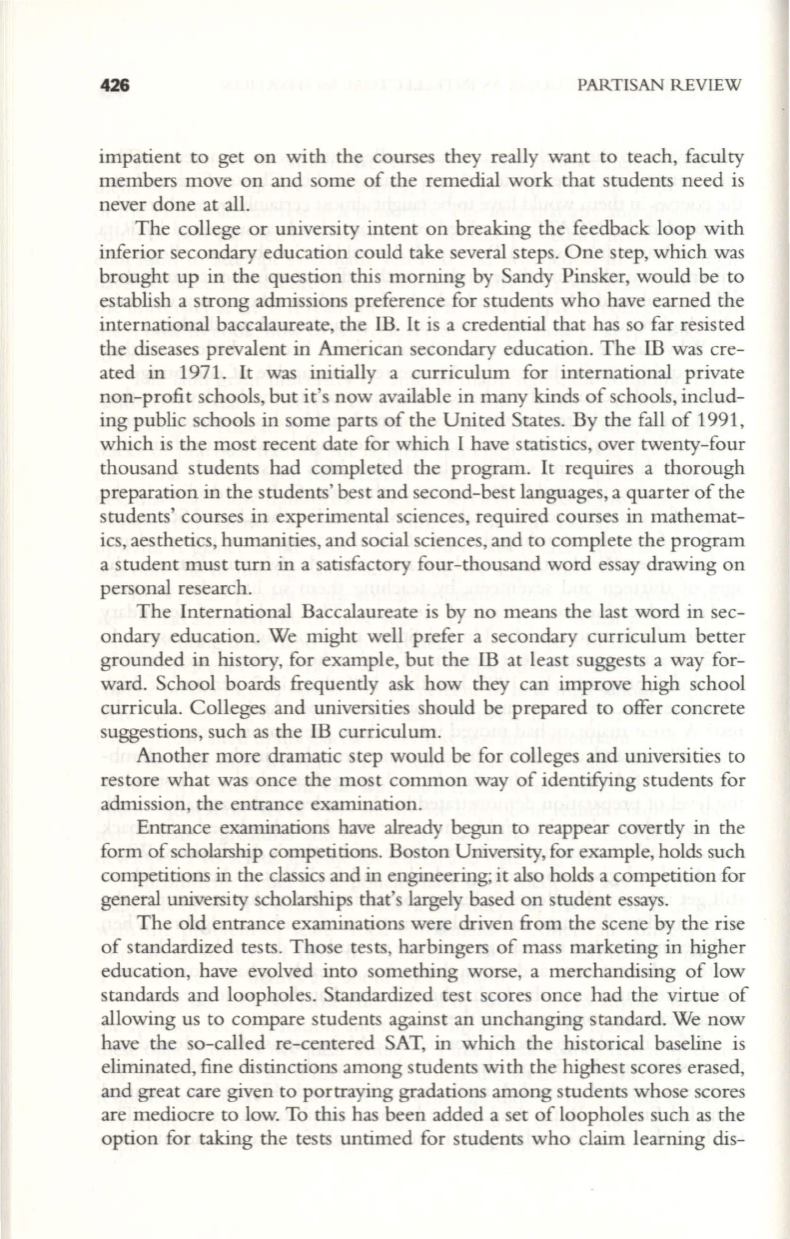
426
PARTISAN REVIEW
impatient to get on with the courses they really want to teach, faculty
members move on and some of the remedial work that students need is
never done at all.
The college or university intent on breaking the feedback loop with
inferior secondary education could take several steps. One step, which was
brought up in the question this morning by Sandy Pinsker, would be to
establish a strong admissions preference for students who have earned the
international baccalaureate, the IB. It is a credential that has so far resisted
the diseases prevalent in American secondary education. The IB was cre–
ated in 1971. It was initially a curriculum for international private
non-profit schools, but it's now available in many kinds of schools, includ–
ing public schools in some parts of the United States. By the fall of 1991,
which is the most recent date for which I have statistics, over twenty-four
thousand students had completed the program.
It
requires a thorough
preparation in the students' best and second-best languages, a quarter of the
students' courses in experimental sciences, required courses in mathemat–
ics, aesthetics, humanities, and social sciences, and to complete the program
a student must turn in a satisfactory four-thousand word essay drawing on
personal research.
The International Baccalaureate is by no means the last word in sec–
ondary education. We might well prefer a secondary curriculum better
grounded in history, for example, but the IB at least suggests a way for–
ward. School boards frequently ask how they can improve high school
curricula. Colleges and universities should be prepared to offer concrete
suggestions, such as the IB curriculum.
Another more dramatic step would be for colleges and universities to
restore what was once the most common way of identifying students for
admission, the entrance examination.
Entrance examinations have already begun to reappear covertly in the
form of scholarship competitions. Boston University, for example, holds such
competitions in the classics and in engineering; it also holds a competition for
general university scholarships that's largely based on student essays.
The old entrance examinations were driven from the scene by the rise
of standardized tests. Those tests, harbingers of mass marketing in higher
education, have evolved into something worse, a merchandising of low
standards and loopholes. Standardized test scores once had the virtue of
allowing us to compare students against an unchanging standard. We now
have the so-called re-centered SAT, in which the historical baseline is
eliminated, fine distinctions among students with the highest scores erased,
and great care given to portraying gradations among students whose scores
are mediocre to low. To this has been added a set of loopholes such as the
option for taking the tests untimed for students who claim learning dis-


